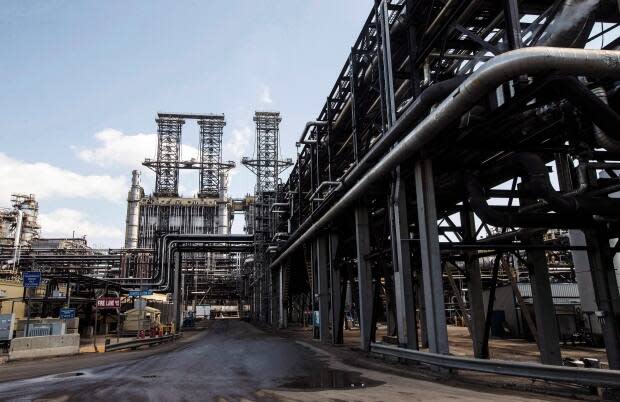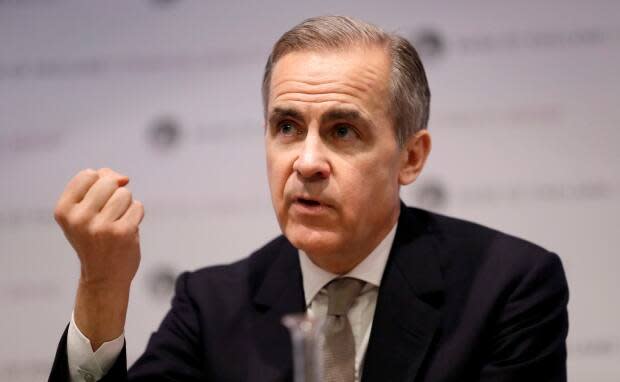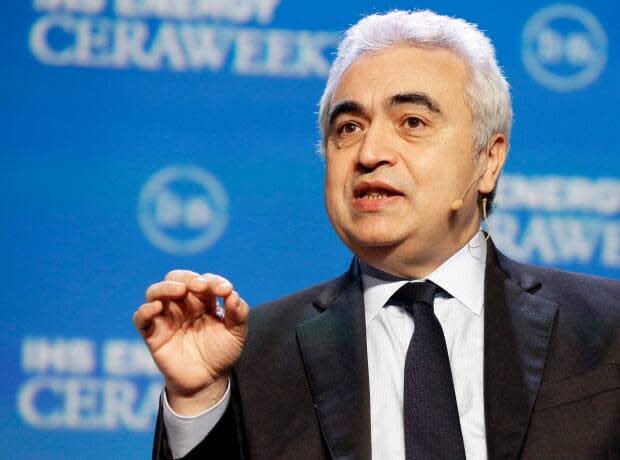OPINION | Oilpatch can reinvent itself, but regulators and markets must do their part

This column is an opinion piece from Deborah Yedlin, a long-time CBC Calgary contributor who has worked as a columnist for both the Calgary Herald and the Globe and Mail and is the chancellor of the University of Calgary.
The climate change dialogue continued in earnest Wednesday at the annual CERAWeek conference hosted by IHS Markit, with comments made by UN special envoy for climate action and finance Mark Carney, offering an optimistic perspective on the future of the oil and gas industry that is grounded in its past.
Carney, who is also vice-chair of Brookfield Asset Management, said the sector has reinvented itself many times. It's easy to forget that, but it's more relevant than ever.
In Canada, work in the Western Canadian Sedimentary Basin morphed from one that was homogenous — conventional oil and natural gas — to one that is now dominated by the oilsands and natural gas produced from tight formations. The United States has experienced a similar change, shifting from conventional production to the short-cycle shale phenomenon in both oil and natural gas.
In both cases, technology changed the game.

And now technology will play a leading role in decreasing the carbon footprint of the sector, but it's going to need more policy support, clarity from regulators and assurances for the financial markets that the transition to a low-carbon economy is not going to strand assets.
Carney's session — which included the International Energy Agency's executive director, Fatih Birol, and Thomas Gottstein, chief executive of Credit Suisse — took a macro view of the transition, which is critical because too often we get stuck within our own narrow lenses rather than opting for the wide-angle option.
Think for a moment on this comment from Birol: that carbon emissions don't have a passport and that the bulk of emissions continue to be generated in emerging countries and that's where investment is needed.
"All the voices are coming from the advanced economies … the international financial architecture needs to accelerate the flow of investment to those (emerging) countries … it's one of the blind spots in the climate debate," said Birol.
Among the bigger unknowns are how the transition will be financed, the coordination by regulators in terms of climate-risk disclosure, the size and structure of the carbon offset market and carbon pricing. These questions — adequately addressed and striking the right balance — will contribute to predictability and transparency for companies, investors and regulators, and support the transition.
As things stand today, there is much that needs to be determined. How prescriptive do policies need to be? What happens to existing infrastructure, such as coal-fired plants in India and China that still have years of useful life, or natural gas pipelines that have been transporting hydrocarbons? Is it a seamless shift to shipping hydrogen?

While financial institutions such as Credit Suisse, which has committed $300 billion US to sustainable finance over the next 10 years, see themselves as playing a critical role, they face uncertainty in the context of consistency of disclosure, reporting regulations, industry standards and regulatory oversight.
As pointed out by both Gottstein and Allison Herren Lee, the acting head of the U.S. Securities and Exchange Commission who spoke on Monday, there needs to be international alignment on rules and regulations and reporting requirements related to climate disclosure in order to understand both financial and systemic risk.
The disclosure, said Herren Lee, must be reliable, standardized, relevant and comparable because the complexity of climate risk makes it difficult to build models using standard tools. Without that consistency of metrics, it's difficult for institutions to allocate and deploy capital, not to mention the challenge of financial markets to properly price risk.
Finding consensus on all these issues will be a challenge, but clearly one that must be addressed if financial institutions and markets are going to support companies and governments engaged in addressing climate change and meeting net-zero targets.
Another missing link is the importance of a robust and transparent carbon offset market.
As Carney points out, the goal is to decrease absolute emissions, but there is a point where that has been achieved and an offset market can close the gap.
What could that look like? And how big does it need to be?
The size of the current market for offsets, said Carney, is $350 million per year, the price per tonne is inconsistently set and it's very fragmented. He estimates the size should be between $50 billion and $100 billion, which could reduce emissions by 21 gigatonnes by 2030, and be linked to carbon capture and storage and sustainable fuel production in order to generate carbon credits. Much like any exchange, the market is liquid, has spot and forward contracts, and is linked to verification of carbon credits and supply.
Success in decreasing global emissions will depend on establishing common policies that set both steps and direction for achieving climate goals and emissions targets, while respecting inherent differences in countries and regions around the world.
But it will also come from the energy sector's ability to reinvent itself, as it has done throughout history, and continue to be the engine that powers the global economy.
This column is an opinion. For more information about our commentary section, please read our FAQ.

